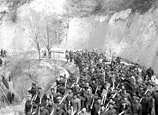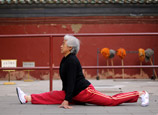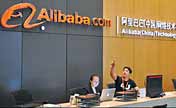
 |
| Illustration: Peter C. Espina/GT |
Spring is always an ideal season for cycling. But for me, there is no fun in cycling in Beijing anymore. It's a dangerous pastime - as I learned to my cost.
As a keen cyclist who has lived in Beijing on and off since 1990, I look back with nostalgia on those wonderful days when it was a "Kingdom of Bicycles."
Remember when the roadside cycle lane was for cyclists and not a glorified parking lot or an overtaking lane for impatient motorists?
The growth in car ownership has exploded, and so we have huge traffic jams, huge competition for parking spots and a heavy road death toll.
According to research, there were 6,000 traffic accidents in China in 1951; by 2001, the figure was 750,000, and it's continued to rise. Most horrifying are statistics from the Ministry of Public Security showing about 2,700 schoolchildren were killed and nearly 11,500 injured in road accidents last year.
Every day as I cycle to work downtown, I see parents (or grandparents) taking youngsters to school by car, motorcycle or bicycle. A car is reasonably safe, but I am appalled by the lack of safety consciousness among adults adopting the other forms of transport.
Along my route, I pass schools where all this activity culminates - posing an additional safety hazard.
Near my home in Western Beijing, for example, are two big schools where parents wait in mid-afternoon to collect their children - double or even triple parking so that there is hardly room for one line of passing traffic.
Anyone moving around Beijing can see the growing evidence of indiscriminate parking - not only in the cycle lanes, but on the grass verges and pavements, posing an additional safety hazard.
Beijing residents once lived close to their work, many in employer-supplied apartments. The jobs remain in the city; but, searching for affordable housing in a market economy, families have decamped to outer suburbs from where they commute back each day, imposing a huge strain on the infrastructure.
There is a rush program of subway construction that is truly amazing, but it seems to make no difference to the traffic density.
As someone who has lived in many parts of the world during a long career, there are options, none of which will be very palatable to some people, I suspect.
We could move more jobs out of the city, creating self-contained satellite cities. Tongzhou is one example in southeastern Beijing founded in the 1990s (current population over one million); but many residents seem deeply unhappy with their quality of life there.
We could make driving into the city center prohibitively expensive through tolls; ban street-level parking, backed by wheel clamping or tow-away of violators, to improve traffic flow; promote "park 'n ride" schemes - giant free car parks in the outer suburbs where drivers transfer to fast, cheap public transport.
However, that would probably be bitterly resisted by the millions of proud new car owners, although it works in cities like London and Singapore, who issue costly special licenses for entry to downtown areas, backed by license-reading roadside cameras to spot violations.
We simply cannot go on indiscriminately allowing more cars on the roads - and endlessly widening them to cope is not the answer. Long live cycling (and even walking)!
















 Year's first rainfall for Beijing
Year's first rainfall for Beijing


![]()
